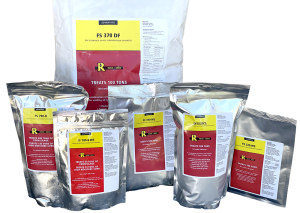PODCAST
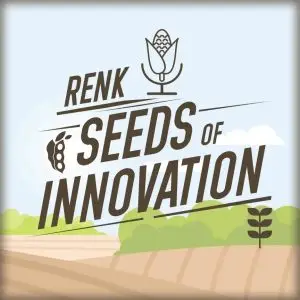
RENK SEEDS OF INNOVATION
Innovating agriculture, one seed at a time.
Where we share generations of knowledge to help grow your own farming operation.
In our episodes, we provide current insights to help you farm stronger and make the most of every acre. Join us as we explore real-world farming solutions and cutting-edge seed technology.
Also available on all streaming platforms.
EPISODES
AUDIOGRAMS/SHOW NOTES
Season 1, Episode 1
Rooted in Legacy: How Seven Generations Built Renk Seed’s Future
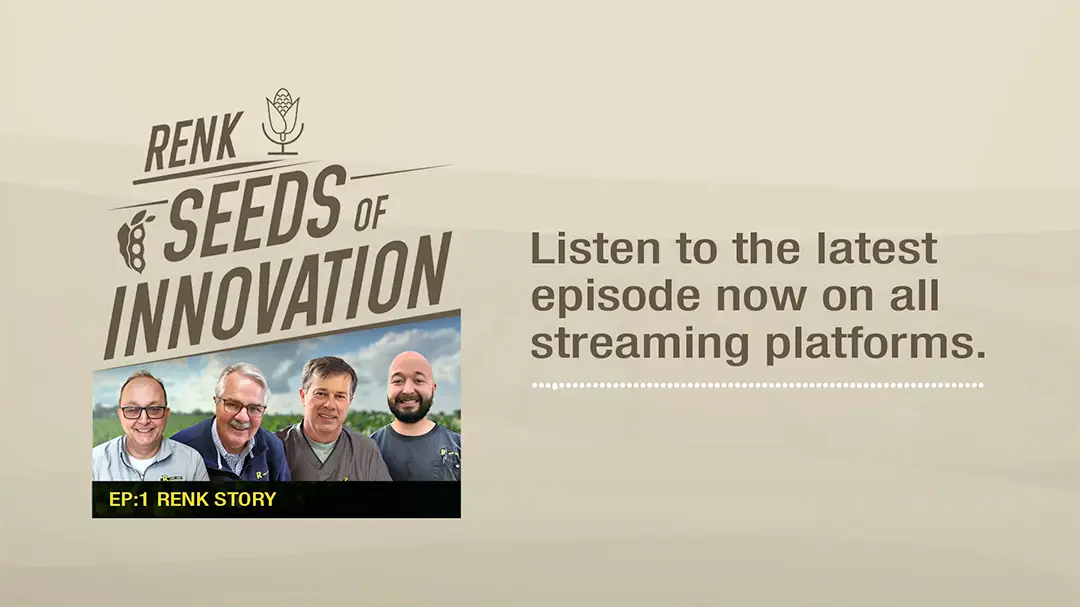


0:16
The inaugural episode contains highlights from Max Renk, 7th generation to farm the Renk family acres, hosting current owners, Jeff, Alex, and Brett Renk. It is a history lesson on who we are and how we got to where we are as a seed company. Also, we’ll learn about some of the lessons previous generations taught the current owners and how those lessons are still implemented today.
Legacy that Stands the Test of Time
In farming, legacy is more than a word, it’s a way of life. For some, it may describe the passing of the farm onto the next generation, or the legacies and traditions instilled from one generation to the next. For the Renk family, legacy is the foundation of everything they do. As a proud seventh-generation independent seed company, Renk Seed has remained dedicated to the values and ideals passed down through its legacy. Remaining a 7th-generation independent seed company has been no small feat as the world of agriculture and seed has consolidated over the years. But they stand firm and are dedicated to remaining a trusted name for agriculture.
For Max Renk, 7th generation of the Renk Family business, there have been many history lessons learned on how the business was started, and where the business is headed.
Recently, Max sat down with Jeff, Alex, and Brett Renk for the inaugural episode of the “Renk Seeds of Innovation” podcast and caught a glimpse into how this 170-year-old-plus business has stood the test of time. Alex, Brett, and Jeff represent the sixth generation of the family business, which dates back to 1846 when Renk ancestors came over from Prussia.
“I’m probably the only one in the room who met William F. Renk,” says Jeff Renk. “This is truly because I’m the oldest, and he was alive when I was a child. Living on the farm, I spent a fair amount of time with him. He was very generous with his time with us youngsters,” he adds.
A Business Built on Breakthrough Moments
William F. Renk (the third generation of Renk lineage) was Jeff, Alex, and Brett’s great-grandfather, who helped to incorporate the family business with his two sons, Walter and Wilbur, as “William F. Renk and Sons.” The family farm was the first to be incorporated in the United States.
“My grandfather graduated from the University of Wisconsin at the same time that hybrid corn had been rolled out. So their opportunity was to embrace hybrid corn, to raise hybrid corn, and start selling hybrid corn. And what a great opportunity for two young men from the University of Wisconsin,” says Jeff.
...their opportunity was to embrace hybrid corn, to raise hybrid corn, and start selling hybrid corn.
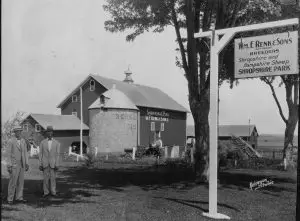 Following the adoption of hybrid seed corn, Renk was propelled into a new era of agriculture. Starting in the late ‘60s, Steve, Richard, and John (the fifth generation of the Renk lineage) began taking over the family business, and the operation began taking on new opportunities again.
Following the adoption of hybrid seed corn, Renk was propelled into a new era of agriculture. Starting in the late ‘60s, Steve, Richard, and John (the fifth generation of the Renk lineage) began taking over the family business, and the operation began taking on new opportunities again.
“The opportunity then was growth; corn acres in the state of Wisconsin went from 1 million to 4 million acres during the decade of the ‘60s and if you’re selling hybrid corn, and your customer base expands four times, right outside your back door, that’s a great way to keep your business going,” shares Jeff. At the time, each of them had a specific interest in the business, which helped to shape a model that Jeff, Alex, and Brett follow today.
Finding Strength in Family and Innovation
Navigating a family business is never easy, but for the Renk family, each member’s unique talents helped build a stronger company. Alex reflects on how their fathers, John and Richard, along with their cousin Steve, found their distinct roles: one passionate about livestock, another focused on mechanics and finance, and the third a driven salesman who put Renk Seed on the map.
“Like the previous generation, different individuals, different expertise complement each other well. And, you know, we found our niches doing something similar. It didn’t happen overnight. It takes a little time to find what you do and what you’re good at,” says Brett.
“I’m most proud of our ability to work together. That groundwork didn’t happen in the last 20 years; it was developed over the last 60 years,” shares Brett. Growing up around the Renk business made their childhood summers quite different from most. While many remember family vacations with their grandparents, Brett’s memories are filled with lessons in business and the ag industry. Looking back now, he realizes just how meaningful those experiences truly were. “I remember Jeff’s eulogy for my grandfather. It wasn’t about quality time we spent going to Disney, it was about the business. We knew who he was [grandfather], what he stood for, and what that meant,” he reflects.
I'm most proud of our ability to work together.
Each generation has come with its own shifts and focuses for the business, but Brett, Alex, and Jeff have paid close attention to the generations before them, learning, adapting, and evolving.
“For our generation, our opportunity has been genetically modified seed: seed corn, seed soybeans, and even alfalfa now,” Jeff shares. “Our generation embraced GMOs, and the necessary relationships to partner on the licensing business as part of our plan. None of this had been invented at the time that I was in school at the University of Wisconsin,” he adds.
Renk Seed has always been at the forefront of change and technology and has seen these milestones, such as the invention of hybrid seed, expansion in acres, and later GMO corn, as pivotal “disruptor” moments for the business. But ultimately, great for the business and Renk’s customers. Those have been the opportunities for each generation going forward, and are a huge part of why Renk Seed is where it is today.
Max wants to learn more: “Something I really want to hit on: working with your family. These important things are how we’ve innovated and how we’ve come forward.”
“We here at Renk Seed are blessed with other multi-generation farms, whether they are growers or dealers. And we tap into that knowledge and ask them things like “What things have you seen that have succeeded here and elsewhere that you want to pass on?” Max adds and inquires of the current owners.
“You see some farms where there’s the patriarch, and then everybody else just follows. And that’s not a great system, in my book, you have got to bring some value to your company or your farm, no matter what,” Alex responds.
...in my book, you have got to bring some value to your company or your farm...
“And experience. I like to say this: nothing like learning the right way by doing it the wrong way a couple of times. Hopefully, it won’t hurt too much and you can keep it moving,” Brett finishes.
Carrying the Legacy Forward
As the seventh generation, Max Renk looks forward to learning from the hard-earned lessons of his family. He’s eager to understand how Brett, Alex, and Jeff navigated challenges and embraced innovation, and how he will carry the Renk Seed legacy into the future.
Season 1, Episode 2
Soybean Secrets: Unlocking Higher Yields
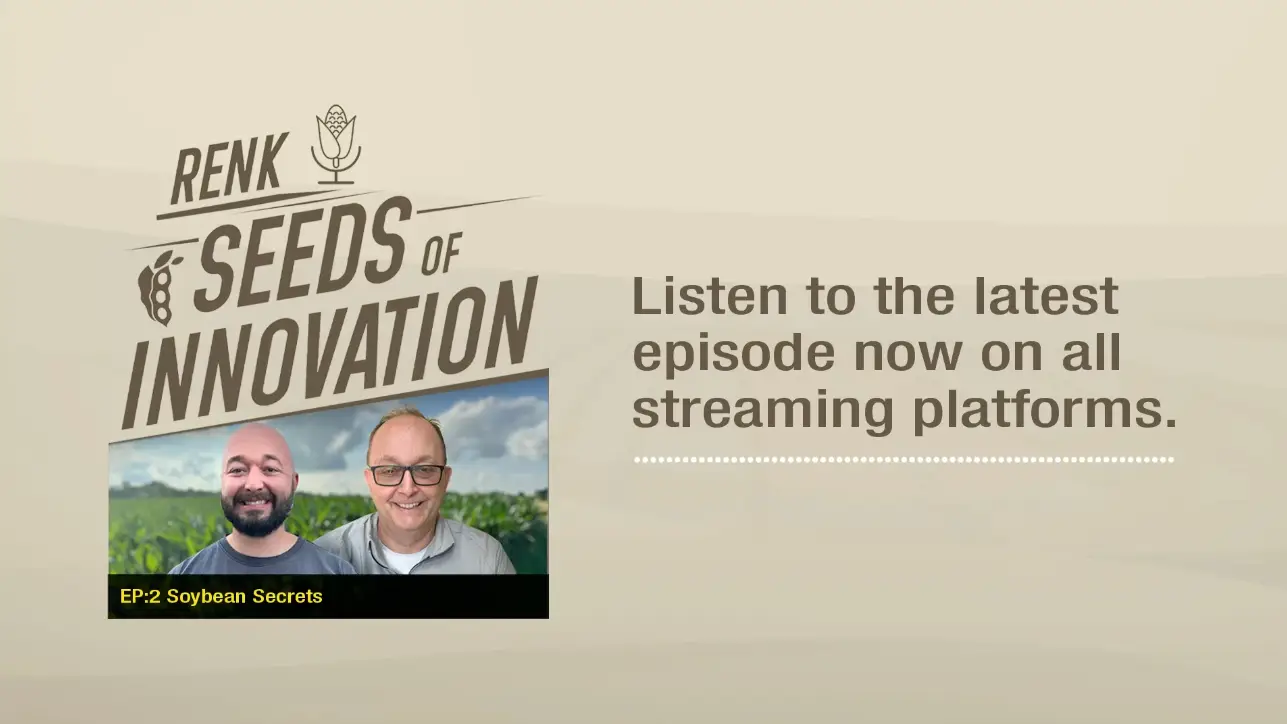


0:16
What’s holding your soybeans back? In this episode, we sit down with Alex Renk, head of soybean selection and research at Renk Seed, to explore the full range of strategies to boost your yield. If you’re looking to push your crop to its full potential, this one’s for you.
Intro
When we want high yields in soybeans, we usually come at it by thinking about adding yield. That is probably not the right mindset. The proper way to think about soybeans is how to not lose yield.
Soybeans are pretty adaptable to conditions and they always try their best to produce the most seed. The plant doesn’t demand much up until flowering. At that point, it will try to put on as many flowers as possible. From these flowers, it will start putting on pods. Here is where things get crucial. With adequate nutrients and moisture, it will fill every pod it can with three or more beans. Any stresses with these will eat away at this ideal, either by aborting pods or beans inside the pods. The less stresses, the better the soybean will maintain its yield.
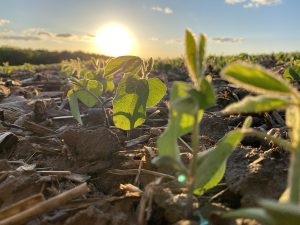 Soil
Soil
High-yielding soybeans want to be fed properly. Soybeans use a lot of phosphorous (P) and potassium (K). Nitrogen levels can be ignored, unless you have extremely high levels. You should be relying on nitrogen-fixing bacteria for your source of nitrogen. These little wonders can take atmospheric nitrogen and convert it for soybeans to use. If you remember your high school chemistry, then you know the atmosphere is made up of 78% nitrogen. When nitrogen levels are too high, this can suppress the nitrogen-fixing bacteria from colonizing the roots of the soybeans and will hurt yield.
Now that we have restricted sulfur dioxide coming from our energy production (the old acid rain), we are seeing a renewed need for sulfur (S) to be available for soybeans. Soybeans do respond well to sulfur, but sulfur takes time to be available for use by soybeans. In-season application will not be a benefit. It needs to be applied in prior years.
Regular soil sampling for P, K, and S levels is very important. Trying to make up for deficiencies through in-season banding or foliar feeding is a tough sled. The waxy protective coat on soybeans and the compact root mass restricts the plants’ ability to absorb large quantities of nutrients applied in season.
Micronutrient applications can work. For example, certain acres in Michigan can use a shot of magnesium. I would be looking at these applications only if you know you have known deficiencies.
Plant early
Common practice is to plant corn first and then follow with soybeans. To maximize yield, this is not the right way to do things. On average, soybeans planted early show roughly a 4-bushel advantage over soybeans planted later. The reason for this is a longer growth window, encouraging extra nodes to develop on the plant. Nodes are where pods are set. In turn, having more nodes can generate more top-end yield.
On average, soybeans planted early show roughly a 4-bushel advantage over soybeans planted later.
Caution: planting early has increased risks. There is a much higher risk from Sudden Death Syndrome and white mold. An early spring freeze of soybeans will result in replanting. Factor this into your planting strategy.
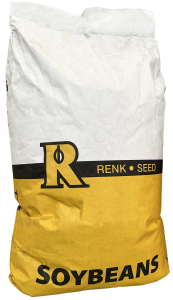 Seed does matter
Seed does matter
With Renk being a seed company, we might be a little biased towards seed selection. Okay, a lot biased. There are very good reasons for this.
Some problems are best addressed through seed. Iron deficiency chlorosis in certain western acres can only be handled economically by variety tolerance. White mold tolerance in varieties can go a long way toward defusing potential white mold disasters. Having brown stem rot resistance takes out a subtle yield robber. Having varieties that carry the Peking gene for cyst nematodes can really help yield in high-infestation acres.
There can be huge differences in yield potential among varieties. Breeding has been marching forward and we commonly see 2-bushel gains with each new breeding class.
Seed treatment is also very important if you are chasing high yields. Planting early means having treatment with fungicides to fend off Sudden Death Syndrome, pythium, phytophthora, fusarium, and other early-season diseases. This is also your chance to make sure you have enough nitrogen-fixing bacteria for your soybeans. These should be components of your seed treatment.
Seed treatment is also very important if you are chasing high yields.
Proper planting
For high yields, proper planting also comes into play. Seed is very expensive and I would like to see people use it wisely. I think a planter does the best job as it puts the seed at a more uniform depth and spacing. Keeping your harvest population above 90,000 per acre helps not lose yield from poor stands. My rule of thumb is 140,000 planting population unless you have a great seed bed.
In theory, the narrower the row the better yield. However, narrow rows also tend to increase pressure from diseases, primarily white mold. You will also suffer some yield loss from sprayer wheel traffic. For most, standard 30” rows are just fine.
Planting depth should be ¾” to 1½”. I prefer more towards ¾”. The soybean has to push the entire seed out of the ground and if you plant too deep, that can be imperiled.
Which maturity?
Is high yield your goal? If so, then I would recommend leaning towards full-season maturities. There is no guarantee they will do any better than earlier varieties but I think they give the highest chance of utilizing late August rains when earlier maturing soybeans are done filling.
There is no guarantee they will do any better than earlier varieties but I think they give the highest chance of utilizing late August rains when earlier maturing soybeans are done filling.
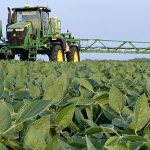 Spraying
Spraying
Weed control is always important. Any weed presence competes with soybeans for water, nutrients, and sunlight. Eliminate them with extreme prejudice.
White mold requires cool temperatures with moist conditions. You can skip fungicide for white mold control IF you don’t have these conditions in late June and early July. Spraying a fungicide for white mold can be very tricky. White mold infests plants through soybean flowers. Preventing white mold means that you need to spray right as the soybeans start to flower and follow up with another spray right before pod set. Once white mold is in the plant, it is too late.
You should look at spraying right before pod set with other diseases. Know that using fungicides can give a net benefit.
The elephant in the room: Do you know what the best part is about farming? Doing everything right and then either getting too much rain or not enough!
Soybeans in the Midwest need moisture at two key times during the growing season. Early on to germinate and get out of the ground. Then again during pod fill. Between those two times, as long as the plants survive, you should do just fine with yield. If moisture is plentiful, the plants will be taller but the number of nodes will be the same. Moisture during pod fill is the most crucial ingredient to deciding yield. Go to church. Buy a cloud seeder. Don’t sell your soul—it is not worth 10 extra bushels.
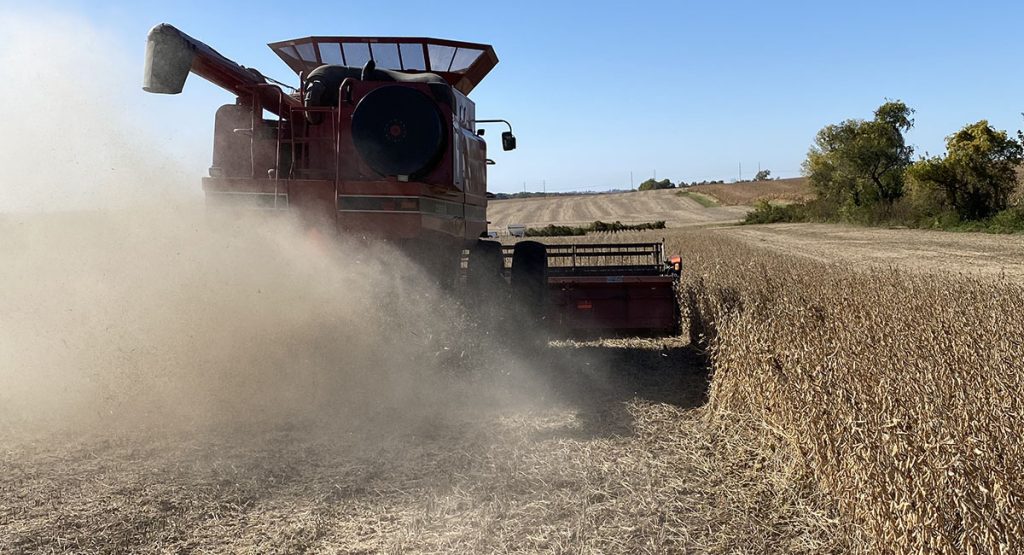 Pushing the envelope
Pushing the envelope
Although I am not going to recommend it myself, there is some evidence you can beat up the growing point of the soybean plant in hopes of causing the plant to branch. Thus, you increase the number of nodes. In turn, this could increase overall pod set. This is done by rolling soybeans and/or spraying them with an herbicide like Cobra. In addition to adding more nodes, you will delay maturity and maybe put the plants in a better moisture situation.
Rolling emerged beans is a delicate process. It is easy to do more harm than good. Same with spraying Cobra. While I know some can pull it off, I would still stick with the less risky options mentioned above for increasing soybean yields.
Conclusion
Proper seed selection, along with early planting into nutrient-rich soil, is the basis for successful results. Once those plants get going, minimizing yield-robbing stresses is critical. With good moisture in August, beans can put up some great yields.
... minimizing yield-robbing stresses is critical.
Season 1, Episode 3
Preserving Every Pound: The Power of Inoculants in Silage Success
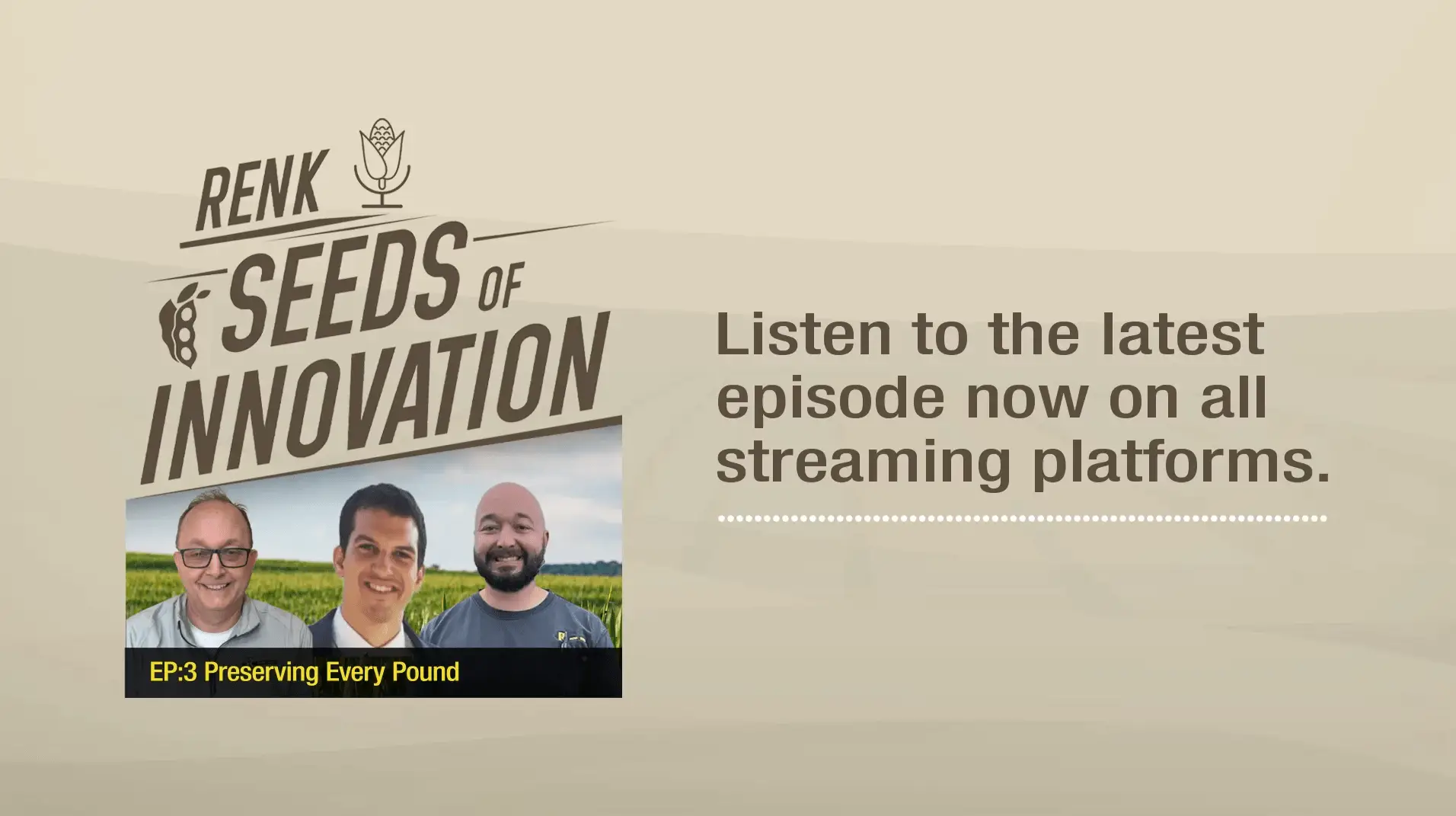


1:02
How do you protect your silage investment from the moment it’s chopped to the day it’s fed? In this episode, Max sits down with Alex Renk and Jesse Thompson of Arm & Hammer to dig into the science and strategy behind using inoculants.From the history of microbial preservation to today’s cutting-edge strain technologies, they explore how inoculants boost digestibility, reduce spoilage, and maximize dry matter retention. Whether you’re a dairy or beef producer, learn how this small additive can drive big returns and prevent your feed from going to waste. Maintaining is gaining, here’s how to get it right.
Background (spoiler alert: there’s alcohol involved!)
We think of silage inoculants as a newly invented product, which to a certain extent they are. But the roots of inoculants are almost as old as the history of mankind itself. What is entwined with the history of mankind other than the use of fire? Alcohol!
In the old days, the simple act of drinking water was life threatening. Water is a great carrier of diseases, bacteria and other nasty parasites. The limited supply of clean water put a lot of pressure on the survival of early mankind. At some point, someone discovered that letting various fruit juices ferment then convert a portion of itself into alcohol made the juice safe and kept it safe for an extended period of time.
Alcohol is really good at killing bacteria and smaller parasites. It can kill us too, but the amount we ingest is normally below dangerous levels. Suddenly, humans could walk around with goat skins full of alcoholic juice and drink without dying. This opened the door for people to spread into areas far from clean water. More importantly, it allowed people to settle in one spot and start farming, which is something we are a little partial to. It was a game changer.
Alcohol is really good at killing bacteria and smaller parasites...the amount we ingest is normally below dangerous levels.
Somewhere along the line, mankind took this a step further. Using bacteria to convert this alcohol into acetic acid and by adding salt they created vinegar. The combination of acid and salt was an excellent solution to preserve food for longer periods of time.
Silage inoculants are a new use for this ancient technology. At its simplest, lactic acid producing bacteria are added to the raw forage. They were selected to out-compete other bacteria and yeasts and create lactic acid. This in turn drops the pH level. During this process, as long as the forage is properly ensiled, the bacteria use up the available oxygen. Once the oxygen is used up and the pH has dropped to 4, the forage will remain stable and preserved until it is fed out.
All Renk products use these lactic acid producing bacteria in their mix. In fact, we use several strains that are geared for different pH levels to maintain the rapid drop to stability.
When you harvest your forage crop, it is at its peak energy content. Left to its own devices it will be consumed by yeasts and bacteria until nothing is left. Nature is pretty aggressive when it comes to recycling. Watch one of those creepy sped up movies of a mouse decaying to see it in action!
The quicker the bacteria do their job then the less exposure to energy loss the forage will have. Using the bacteria shortens the drop from 14 days to 4 days and we expect to see a savings of 3-5%+ in reduced losses.
Another benefit of these bacteria is they can digest some of the indigestible components of the plant structure. This increases the available energy and digestibility of the crop and does not rely on the animal’s rumen to do all the work. Our HM 780B and HMC 790B excel at this with high moisture corn.
Another benefit of these bacteria is they can digest some of the indigestible components of the plant structure.
The buchneri based inoculants also have benefit for feed out. Our HM 780B and HMC 790B contain buchneri generating bacteria that will prevent yeast growth when oxygen is reintroduced into the forage, such as an exposed bunker face. This will help prevent losing a portion of the crop to spoilage or prevent giving spoiled feed to your animals and putting stress on their digestive system.
One other product we offer, MT550CL, adds a bacteria that suppresses clostridium growth. This normally occurs when the crop is harvested at very high moisture (>65%).
Forage inoculants are a cost-effective way to help maximize return per acre, no matter what the conditions you face in the field. It’s only been several thousand years in development!
Season 1, Episode 4
Midseason Reality Check – Managing Disease, Insects, and Crop Stress in 2025
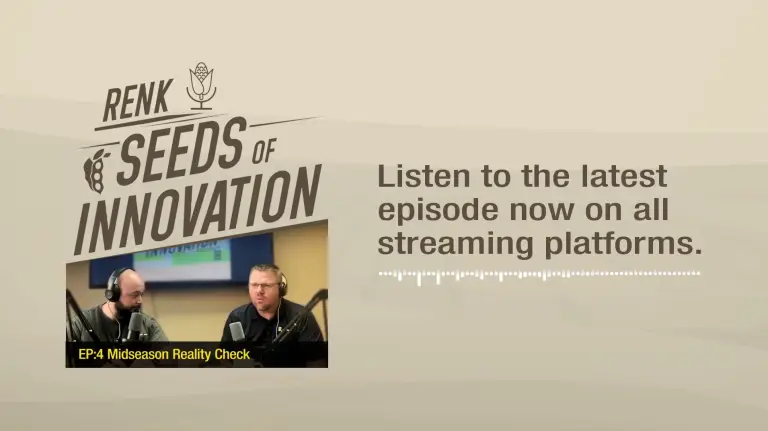
This episode brings a timely field-level update from across the Corn Belt as the crop enters its reproductive stages. Max Renk is joined by Renk team members Jim Torkelson and Karl Bobholz to break down what’s being seen in real-time across the Renk territory. From Tar Spot and Goss’s Wilt to Soybean Cyst Nematodes and Japanese Beetles, tune in to hear how early-season weather has influenced disease and pest pressure during the 2025 growing season. The team also shares actionable tips on fungicide timing, insecticide considerations, crop scouting, drone insights, and how current observations can shape seed selection and field planning for 2026.
Taking Our Research to New Heights
At Renk, we’re committed to delivering products that perform—and that starts with how we evaluate them.
This season, we’ve taken our research to new heights by expanding the use of drone imagery across our corn testing network. These high-resolution visuals give us a fast, consistent, and field-wide look at every stage of crop development—from emergence to late-season stress—and help us track disease pressure.
Here’s how this technology is helping us serve you better:
- Emergence and Stand Uniformity:
Drones allow us to quickly assess emergence consistency across entire plots. That means we can better evaluate hybrid vigor and placement potential early in the season—long before tassel. - Disease Monitoring Across Environments:
From gray leaf spot and northern corn leaf blight to Tar Spot, drone imagery helps identify disease pressure early. We can evaluate hybrid tolerance and flag which products maintain plant health under real-world, high-pressure scenarios. - Stress Tolerance, Even on Tough Acres:
Drones help us spot differences in hybrid performance under stress—like drought, compaction, or high pH soils common in western territories. That means more precise recommendations for tough fields where every bit of tolerance matters.
Drones help us spot differences in hybrid performance under stress—like drought, compaction, or high pH soils common in western territories.
- Data That Drives Placement Decisions:
We’re using these images to make more informed product calls—knowing which hybrids thrive under specific conditions and which need more managed acres. - Fungicide Timing and Application Support:
Earlier disease detection supports smarter, more cost-effective fungicide strategies for both trial analysis and in-field grower decisions.
At Renk, we’re using every tool available to make sure our product recommendations are backed by real data, from real fields—just like yours. Drone imagery is one more way we’re turning research into results.
At Renk, we’re using every tool available to make sure our product recommendations are backed by real data, from real fields—just like yours.
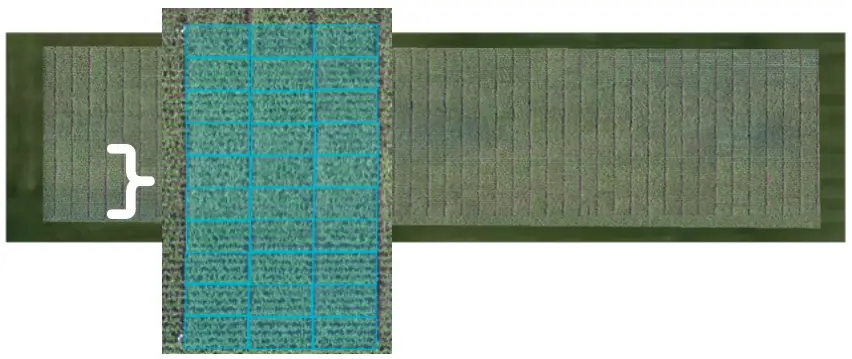
How can we take care of you?

